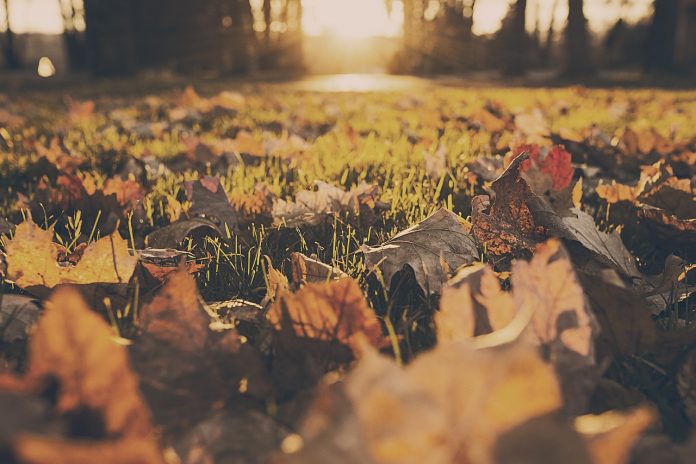Backyard conversation doesn’t end with the growing season. Every season provides opportunities to scout your property with the goal of improving your personal ecosystem regarding cleaner water, healthier soil and improved wildlife habitat.
Soil fertility. For starters, don’t guess, test. Soil testing performed in the early fall still allows ample time to add any recommended soil amendments so your lawn and garden will be ready to perform better next growing season. Penn State provides affordable testing for homeowners through its agricultural services lab.
Keep it covered by planting a cover crop. Keeping roots in the ground is one of the best ways to build healthy soil. Both living and non-living roots have a major role in nutrient cycling and soil fertility. The rhizosphere (the soil surrounding the root) is the ‘sweet spot’ for plant/nutrient interactions. Soil microbes utilize the sugary exudates from living roots as well as the nutrients from the decaying roots of plants that have completed their life cycle. So dead or alive, roots improve soil health.
Don’t burn it, turn it
Unfortunately, many Ohioans are still in the practice of burning large piles of raked leaves each fall. Burning leaves falls under Ohio’s open burning regulations. The Ohio Revised Code 1503.18 prohibits most open burning in March, April, May, October and November between 6 a.m. and 6 p.m. This code is under the authority of the Ohio Division of Forestry. The Ohio EPA also has authority over open burning under the Ohio Administrative Code Chapter #3745-19. It is also advisable to check with your local municipality to see if they have additional open burning restrictions or required permits. Note that even if you acquire a permit to lawfully burn your leaves at an approved time, it is still a terrible waste of a valuable natural resource.
Perhaps the fact that we refer to fallen leaves as ‘leaf litter’ makes us prone to think of this natural resource as a waste product that needs to be burned or otherwise discarded. Nothing could be further from the truth. During the growing season, plants draw nutrients from the soil to produce leaves. When those same leaves fall back to the ground and decay, they return those nutrients back to the soil. Raking and removing leaves from a site breaks the nutrient cycle and will eventually reduce soil fertility.
Leaf litter is habitat
Many moth and butterfly caterpillars that feed on the leaves of trees and shrubs drop to the ground beneath their host plants to complete their life cycle by over-wintering in the leaf litter. By simply allowing the leaves that fall within the dripline of a tree to remain under the tree, you can provide a soft landing for these important species.
When we get out our rakes and leaf blowers and remove this critical habitat, we reduce the number of spring-emerging moths and butterflies. Any disruption to the life cycle of these species will ultimately reduce the number of caterpillars that will be available for birds to rear their young the following spring and summer.
If you have too many leaves to mow or leave beneath trees, turn that excess into gold. Due to the improved soil health and weed suppression benefits, gardeners often refer to composted leaves as brown gold. Fall is an excellent time to start a compost pile and begin making your own brown gold — and it doesn’t have to be anything fancy. A simple pile of leaves that you turn every couple of weeks can become gardener’s gold in six months or sooner.
Mow ‘em; don’t blow ‘em
Mowing leaves (especially with mulching blades) that are on your lawn will reduce their size and they will eventually settle onto the soil around your grass. The decaying leaf particles will provide nutrients back to the soil, reducing the amount of lawn fertilizer you may need. Once settled, the leaf fragments will also help shade out weed seeds and reduce weed germination in your lawn.
If you follow a routine lawn treatment schedule, it is worth noting that research indicates that fall is the best time to fertilize your lawn. Consider eliminating or reducing chemical applications except for this optimal fall timing. Reducing chemical inputs is a critical strategy for clean water.
Branching out and learning more. Fall is also a great time to plant trees, shrubs and herbaceous perennials. Garden centers typically offer some of their best discounts in the fall. Look for native plants. You do not have to compromise on beauty, either, because Ohio has many beautiful native species. By planting native, you can feel confident that you are helping to preserve our rich biodiversity.
With the season of senescence upon us and yard chores waning, you can use this time to re-evaluate your landscape. Take advantage of the slower pace to read a book, listen to a podcast or participate in virtual or in-person learning opportunities relating to conservation of our natural resources. Contact your local soil and water conservation district and county extension office to find out about the programs they are offering.
(Lynn Vogel is a stormwater educator for the Portage Soil and Water Conservation District. She can be reached at lvogel@portageswcd.org.)













